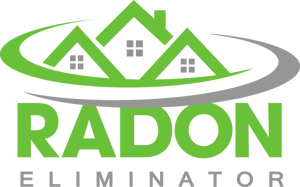Radon Testing Methods
Radon is a radioactive gas that cannot be seen, smelled, or tasted. It is created naturally from the decay of radioactive elements, such as uranium, which is found in soil and rock throughout the world. Radon is released from the soil and rock into the air for a period of time through the natural half-life decay process. The chemical element is also detrimental to health as well, considering that too much exposure could leave you at risk of lung cancer. It is also the second leading cause of lung cancer, and first amongst lung cancer deaths for non-smokers.
Measuring radon levels takes picocuries, which is also known as pCi/L when measured per liter of air. It helps acquire the measurement of radon in the air of a house or commercial building. Radon levels at 4 pCi/L required a home to be fixed immediately. Even if your home has less than 4 pCi/L, it's still best to try and reduce it.
For more information, read our blog post: Radon: The Silent Killer in Your Home.
Table of Contents
When it comes to detecting radon concentration levels in your living space, there are two common testing methods to determine if your home contains elevated levels of radon gas and is a health risk being there.
Passive Radon Testing
One way to test radon levels at home is a "passive" type of device such as an activated charcoal test kit. This radon test kit will stay in the lowest level of your home for a minimum of 48 hours collecting the atoms and alpha particles from the radon. It will then be sent to a radon testing laboratory for analysis, where the radon particles will be counted to give you results of the indoor radon levels in your home and determine if your living space is at a safe level, which means no radon levels.
Passive radon testing kits can be purchased at a local home goods store or sent to you via mail by Radon Eliminator. Test kits are typically used at the homeowner's convenience. The data collected is only accurate if the directions are followed precisely.
Active Radon Testing
Another form of radon testing is with the used of an "active" device called a continuous radon monitor. Continuous radon monitors measures levels of radon gas in the air over time. These devices are for professional use only used by licensed radon testing specialists. These tests are also short-term, meaning they stay in the home for a minimum 48 hours collecting data.
Many people prefer to contact a licensed specialist to conduct the radon testing in their home because they do not have to worry about following directions, mailing the test to the lab, and then waiting on results. Once the 48 hours of data is collected with the monitoring system, the specialist will be able to tell you immediately what the radon concentration levels are in your home.
Short-Term Testing
There are two types of radon tests that can be done in your home with both passive and active radon testing. The first type is called a short-term radon test. While it's mainly used in passive radon testing, having a high temporal variation of radon makes short-term measurements untrustworthy at times. With a two-to-nine-day testing period, the short-term test consists of charcoal canister devices, alpha-track detectors, electret ion chamber detectors, continuous monitors, and charcoal liquid scintillation. These devices help detect radon levels and decay products for existing radon gas. It is done in closed-house conditions, meaning to always keep your windows closed, doors closed, and any air conditioning or fan off during this testing period.
Long-Term Testing
Long-term testing brings a lengthy process for radon levels. It is the best way to assess the average radon concentration in a house every year. This type of testing can take a minimum of three months to a maximum of one year to complete. It is recommended to conduct a long-term test for a more accurate and comprehensive assessment of radon levels in your home. This type of testing is typically done using alpha-track detectors or electret ion chambers. Long-term testing is seen as a bit more vital due to up-and-down radon levels caused by seasonal weather conditions, seasonal variations and environmental conditions.
Radon Mitigation
A proper way of regulating radon levels in your living space is radon mitigation. Radon mitigation is a costly process, ranging from $800 to $1500 depending on the size of your home, location, and many other factors. This can help reduce radon levels because of how pipes and fans are used to remove the gas from beneath. That way, you can eliminate radon gas before it enters the entire home.
Contact a Radon Testing Specialist
If you have never had your home tested for radon gas, now is the time to contact our licensed radon testing professionals. Radon Eliminator will send a specialist to your home at a discounted price; it is our goal to promote radon awareness and educate as many Ohio families on the dangers of radon gas exposure.
Radon is known as the silent killer, killing more people a year than drunk drivers. Keep your family safe, contact us today for a discounted radon test!





